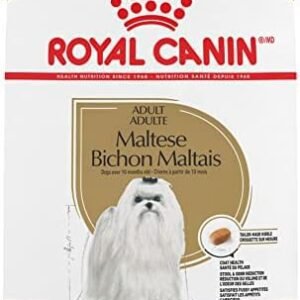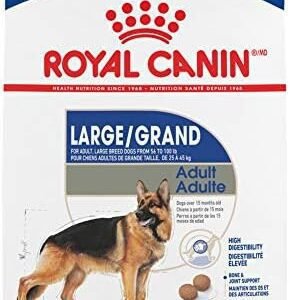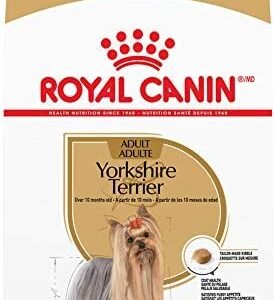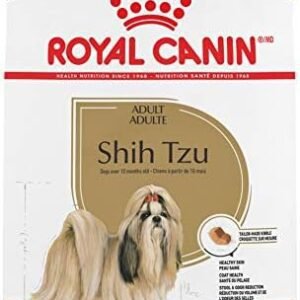Waking up to find your dog, once full of energy, now lying still is heart-wrenching. Many pet owners face this when their dogs might have Addison’s disease. Simple tasks like walks become hard, and playtime is now filled with worry.
Discovering treatments like Zycortal for dogs can be a ray of hope. Learning how it works can help manage your dog’s Addison’s disease. This can bring back joy and energy to your pet’s life.
Table of Contents
Understanding Addison’s Disease in Dogs
Addison’s disease in dogs, also known as hypoadrenocorticism, is a serious condition. It happens when dogs don’t make enough adrenal hormones. This is especially true for young to middle-aged dogs, and females are more likely to get it than males.
Some breeds, like standard poodles and Nova Scotia Duck Tolling Retrievers, are more at risk. This is because of their genetics.
The biggest worry with Addison’s disease is an Addisonian crisis. This is a life-threatening emergency. About 30% of dogs with Addison’s will face this crisis.
Symptoms show up when 90% of the adrenal cortex is not working right. This can lead to severe health issues if not treated quickly.
To diagnose Addison’s disease, vets use the ACTH stimulation test. This test shows if there’s a problem with hormone production. Treatment involves giving dogs cortisol and aldosterone for life. This helps manage symptoms and prevent emergencies.
With the right treatment and care, many dogs can live well with Addison’s disease. But, without treatment, it can be deadly. So, it’s crucial to know about adrenal insufficiency in dogs to catch it early and help them.
What Causes Addison’s Disease in Dogs
Addison’s disease is a serious health issue in dogs. It often comes from different causes. Autoimmune disorders are a big reason, where the immune system mistakenly attacks the adrenal glands.
This attack makes it hard for the glands to make important hormones like cortisol and aldosterone. This leads to adrenal gland dysfunction in dogs.
Other reasons include congenital conditions and tumors that mess with the glands’ work. Infections can also play a part, sometimes harming hormone production. Some medicines, like those for Cushing’s disease, can lower cortisol levels and cause this illness.
Knowing what causes Addison’s disease in dogs is key for vets. Spotting it early and treating it right depends on understanding these causes. By knowing what affects the adrenal glands, owners can get their dogs the care they need sooner.
| Cause | Description |
|---|---|
| Autoimmune Disorders | Immune system mistakenly attacks adrenal glands, impairing hormone production. |
| Congenital Conditions | Inherited issues affecting adrenal gland development and function. |
| Tumors | Growths that may directly interfere with adrenal gland health. |
| Infections | Diseases that can lead to damage or dysfunction of the adrenal glands. |
| Medication Side Effects | Some drugs can lead to reduced cortisol levels, increasing Addison’s risk. |
Recognizing the Symptoms of Addison’s Disease
It’s crucial to know the symptoms of Addison’s disease in dogs for early treatment. The signs can be subtle and similar to other health problems. Common symptoms include:
- Loss of appetite
- Lethargy
- Vomiting and diarrhea
- Weight loss
- Shivering
- Muscle stiffness
- Depression
- Dehydration
Pet owners must watch closely for these signs. About 20% of dogs with Addison’s may have normal blood levels. In severe cases, dogs can experience shock and heart problems.
Lab tests might not always confirm Addison’s disease. Only about 60% of dogs with low cortisol levels also have low blood sugar and cholesterol. This makes diagnosis tricky.
| Symptom | Description |
|---|---|
| Loss of appetite | Refusal to eat, which can lead to weight loss. |
| Lethargy | Excessive tiredness or lack of energy. |
| Vomiting | Frequent episodes that may lead to dehydration. |
| Diarrhea | Loose, watery stool that can contribute to fluid loss. |
| Shivering | Shaking or trembling without a clear reason. |
| Muscle stiffness | Difficulty moving, possibly indicating discomfort. |
| Depression | Inactivity or lack of interest in usual activities. |
| Dehydration | Results from vomiting and diarrhea, leading to increased thirst. |
Spotting the symptoms of Addison’s disease early can greatly improve treatment. If you see any of these signs, talk to your vet right away. This ensures your dog gets the care they need quickly.
The Importance of Diagnosing Addison’s Disease
Diagnosing Addison’s disease in dogs is key to their health and happiness. This condition, also known as hypoadrenocorticism, happens when the adrenal glands don’t make enough hormones. Finding it early can stop serious problems, like Addisonian crises, which can be life-threatening.
Vets start by checking the dog physically and doing lab tests. The main test is the ACTH stimulation test, seen as the best way to find Addison’s disease. It checks if the adrenal glands can make hormones like cortisol and aldosterone, important for handling stress.
If Addison’s disease isn’t caught soon, symptoms can get worse. Dogs might act tired, not want to eat, vomit, and drink and pee more. Spotting these signs early can help treat and manage the disease better.
Most dogs get Addison’s disease between three and six years old, mostly females. Breeds like Standard Poodles, West Highland Terriers, and Great Danes are more likely to get it. About 30% of dogs are diagnosed after a crisis, showing how important it is to watch for symptoms.
Regular blood tests and check-ups are crucial for at-risk dogs. With ongoing care and monitoring, owners and vets can make treatment plans that improve life quality. Early detection and proper care can greatly improve a dog’s life and happiness.
What is Zycortal? An Overview
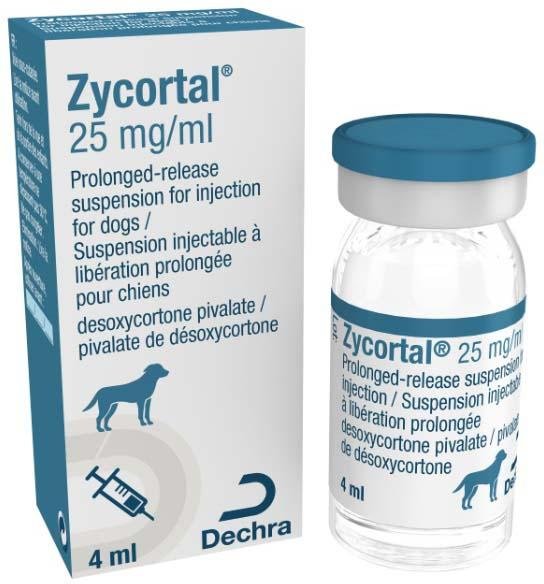
Zycortal is a special medicine for dogs with Addison’s disease. It’s given under the skin. It helps replace a hormone called aldosterone, which is missing in these dogs.
This medicine keeps the dog’s blood pressure and hydration levels right. It’s very important for their health.
The first dose of Zycortal is 2.2 mg/kg (1 mg/lb) of body weight. After that, the dose might change based on how the dog feels. A check-up is needed about 10 days later to see if the treatment is working.
Usually, a second dose is given about 25 days after the first one. If the dog seems tired, vomits, or has trouble peeing, the dose might need to be adjusted. Keeping an eye on the dog’s blood work is key to managing their condition.
| Parameter | Details |
|---|---|
| Initial Dose | 2.2 mg/kg (1 mg/lb) by subcutaneous injection |
| Second Dose | Approximately 25 days after the first dose |
| Dosing Interval | Every 20 to 30 days, based on clinical condition |
| Monitoring Visits | Approximately 10 days after first dose |
| Common Adverse Reactions | Polydipsia, lethargy, alopecia, vomiting |
| Product Volume | Each 4 mL vial contains 100 mg of Desoxycorticosterone Pivalate |
| Manufacturer | Dechra |
| Average Cost | $272.77 per vial |
Keeping a close eye on the dog and adjusting the treatment as needed is crucial. This helps ensure the dog stays healthy and comfortable.
Zycortal for Dogs: A Key Treatment Option
Zycortal is a key treatment for canine Addison’s disease. It provides essential mineralocorticoid replacement therapy. This is crucial for breeds like Standard Poodles, Great Danes, and West Highland White Terriers.
Administering zycortal involves an initial injection and then regular doses. A vet will guide the schedule. This helps stabilize dogs with this chronic disorder. It aims to reduce symptoms and improve their quality of life.
A study with 37 dogs showed no electrolyte issues after treatment. Regular check-ups help catch any health problems early. This confirms zycortal is a good option for treating canine Addison’s.
| Parameter | Test Population Dogs | Control Population Dogs |
|---|---|---|
| Urine Specific Gravity | 1.033 (1.023-1.039) | 1.022 (1.016-1.029) |
| Hypokalemia Occurrences | 6 | 9 |
| Plasma Renin Activity Suppression | 23/112 (20.5%) | 84/104 (80.8%) |
Adding zycortal to a dog’s care plan helps manage Addison’s disease well. Regular checks on electrolyte levels and vet visits are key. They ensure the best health for dogs needing this treatment.
How Zycortal Works in Canine Addison’s Disease
Zycortal is made to help manage Addison’s disease in dogs. It works by replacing a hormone called aldosterone. This hormone is key for keeping the body’s mineral balance right, especially sodium and potassium.
When given to dogs, Zycortal helps keep sodium in the body. It also helps get rid of potassium through the kidneys. This is important for keeping the right balance of minerals and keeping the dog hydrated.
Zycortal also helps keep blood pressure stable and supports normal body functions. It acts like the body’s natural defense, helping dogs with Addison’s disease live better and more active lives.
It’s very important to work with a vet when using Zycortal for your dog. They will need to check on your dog often and make changes as needed. This helps make sure your dog gets the best care for this tough condition.
Dosing Guidelines for Zycortal
When treating dogs with Addison’s disease, knowing the right dosage is key. The first dose is crucial for starting treatment. It’s important to follow the dosage guidelines to tailor the treatment to each dog’s needs.
Initial Dosage Recommendations
The starting dose for dogs is 2.2 mg/kg (about 1 mg/lb) via subcutaneous injection. This dose helps veterinarians see how well the treatment is working. They will check the dog’s electrolyte levels about 10 days later.
They will also check again after 25 days. This is to see if the dosage needs to be changed based on the dog’s health.
Dosage Adjustments Based on Blood Tests
Blood tests are important for adjusting the dosage. The sodium and potassium levels, shown by the Na+/K+ ratio, guide these changes. The dosage can be adjusted from 2.0 to 2.4 mg/kg to keep the dog stable.
Following these guidelines helps give each dog the best care. This leads to better management of Addison’s disease.
Administering Zycortal: Best Practices

Using the right methods to give Zycortal is key for treating Addison’s disease in dogs. Following zycortal injection best practices helps the medicine work better. It also makes sure your dog is comfortable and not stressed. A vet usually gives the injection once a month to keep the disease in check.
Injection Techniques and Frequency
Important steps for giving Zycortal include:
- Choosing the right spot for the injection to help it absorb better.
- Using clean techniques to prevent infection.
- Sticking to the recommended schedule, which is every four weeks.
It’s also important to watch your dog’s electrolyte levels, like sodium and potassium. Aim for a sodium-to-potassium ratio of 30-32. Start testing these levels every two weeks until they’re stable. Then, test every four months in the first year.
Missed Dose Protocol
If you miss a dose, act fast. Call your vet right away for advice. Missing a dose can upset your dog’s hormonal balance, which is crucial for their health. Keeping a regular schedule for administering Zycortal helps prevent missed doses and keeps your pet’s treatment on track.
Potential Side Effects of Zycortal
Dog owners should know about Zycortal’s side effects. It’s used for Addison’s Disease in dogs. Some reactions are mild, while others are serious. Knowing these side effects helps keep your dog healthy while they’re on the treatment.
Common and Serious Side Effects
Common side effects in dogs on Zycortal include:
- Polyuria (15.0%)
- Polydipsia (13.3%)
- Depression/Lethargy (9.7%)
- Inappropriate Urination (8.0%)
- Alopecia (5.3%)
- Decreased Appetite/Anorexia (4.4%)
- Panting (3.5%)
- Vomiting (3.5%)
- Diarrhea (2.7%)
- Shaking/Trembling (2.7%)
- Polyphagia (1.8%)
- Urinary Tract Infection (1.8%)
- Urinary Incontinence (0.9%)
Depression and lethargy are more common in dogs on Zycortal. Vomiting and diarrhea affect 3.5% and 2.7% of dogs, respectively. It’s important to watch your dog closely after treatment. They might experience pain at the injection site or rare pancreas problems.
Precautions for Pregnant and Lactating Dogs
When pregnant or lactating, dogs on Zycortal need extra care. The drug could affect fetal development. So, it’s best to avoid it unless necessary.
- Consulting with a veterinarian to discuss risks and alternatives
- Avoiding the medication unless absolutely necessary
- Monitoring for any signs of adverse reactions in both the mother and puppies
Talking to a vet is key to managing risks. This ensures the best health for the mother and her puppies.
Veterinary Care for Addisonian Dogs on Zycortal
Keeping an eye on your dog’s health is crucial when they’re on Zycortal. Regular vet visits help track important health signs. This way, vets can quickly adjust the treatment if needed.
Vets set up a schedule for check-ups, which might include blood tests. This helps catch any health changes early. It’s also important for pet owners to watch for signs of trouble. If your dog seems more tired or hungrier than usual, talk to your vet.
Learning how to give Zycortal correctly is also key. It helps avoid problems and makes the treatment work better. Working together with your vet is important to make sure your dog gets the best care.
Comparative Analysis: Zycortal vs. Other Treatments
Zycortal stands out in managing canine Addison’s disease. This analysis compares its effectiveness and cost to other treatments like DOCP and fludrocortisone acetate.
Effectiveness and Cost Considerations
Zycortal’s success rates are similar to DOCP and fludrocortisone. A study with 152 dogs showed Zycortal’s success rate at 86.2%, close to Percorten-V’s 85.1%. DOCP treatment lasted up to 16.2 months, showing Zycortal and DOCP are effective.
Cost is important in choosing a treatment. Zycortal might be more affordable, depending on the dosage needed.
Side Effects Compared to Alternatives
Zycortal has a good safety record compared to other treatments. Common issues like polydipsia and polyuria were seen in all groups. But, severe electrolyte imbalances were less common in Zycortal users.
It’s important to watch electrolyte levels with any treatment. Zycortal offers effective management with fewer side effects.
The Lifelong Management of Addison’s Disease
Managing Addison’s disease in dogs is a lifelong job for pet owners. Since there’s no cure, dogs need constant care. This care includes giving Zycortal, checking electrolyte levels, and regular vet visits.
This treatment keeps the dog’s health stable. It lets them live an active and happy life, even with the disease.
Vets are key in managing Addison’s disease. They check if Zycortal is working right and watch for side effects. They also adjust the treatment as needed.
This close monitoring helps manage the disease well. It also improves the dog’s life, helping them deal with hypoadrenocorticism better.
The success of managing Addison’s disease depends on the treatment and the owner’s care. With the right treatment and vet support, dogs with Addison’s can live well. They can enjoy a good quality of life for a long time.





















